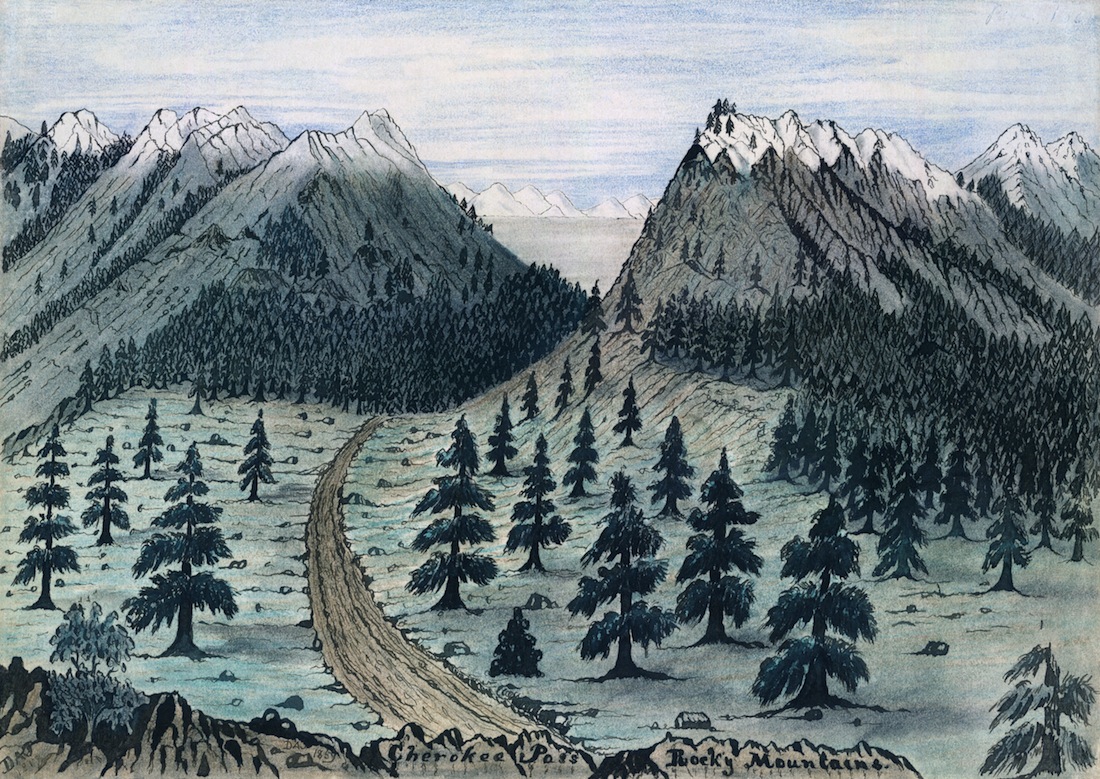
This 1859 drawing by Daniel A. Jenks, shows a dirt trail among pine trees leading toward a heavily forested pass between snow-capped mountains near present-day Ft. Collins, Colorado. Image from Library of Congress
History author Barbara Fleming discusses the less well-known but significant Cherokee Trail through Oklahoma, Kansas, Colorado and Wyoming:
In 1849, a band of Cherokee set out for California, hoping to find and mine gold. They had had experience with gold mining in Georgia, their native land, from which they had been forcibly relocated to Indian Lands, now Oklahoma. Finding no fortune or gold there, some among the tribe decided to head for California, where the fields supposedly gleamed with the precious metal. Many of the Cherokees were professionals — doctors, lawyers — and most were well-educated. Several kept diaries of the journey. Some Anglos joined the adventurers to create the large group, which forged the Cherokee Trail. Historically, the Cherokee Trail starts at Bent’s Fort in southeastern Colorado and ends at Fort Bridger in Wyoming, near the Utah border. Starting on the well-worn Santa Fe Trail, the Cherokee party headed northwest toward Wyoming in order to circumvent the highest of the Rocky Mountains. Trails heading west generally bypassed Colorado because of that great obstacle — the Oregon Trail followed the North Platte through Nebraska and Wyoming. But the Cherokee party elected to skirt the mountains through eastern Colorado, following waterways, as trails tended to do, when possible.Get the Story:
Barbara Fleming: Cherokee Trail less known but had role in opening West (The Coloradoan 11/10)
Join the Conversation